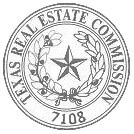 Yes, I did.
Yes, I did.
For years, I found myself getting on roofs that I really probably should not have gotten on for safety reasons. But the desire to do a good job and the fear of missing something important drove me to risk it. Thankfully, amazingly really, I never had a mishap from those rooftop forays. It always bothered me that I knew many inspectors who always inspected from the ground, regardless of the roof slope, “for safety reasons.” Though, who am I to say what is safe for another person. As I got older, I became gradually more concerned about the safety factor.
As luck would have it technology was on my side and the hobby quadcopter drone technology began and advanced. I eagerly watched it develop. Knowing it could have great application for me in the inspection field. Initially, I waited because the technology was still evolving and the licensing rules were changing constantly and did not make a lot of sense. Eventually, as things do, those things worked themselves out. The tech of the Drones improved, the cameras improved, and the licensing requirements finally got ironed out to some semblance of reasonable.
Around 2016 or so, I went ahead and got my FAA license to legally fly a drone for commercial purposes (a very important step that way too many people ignore.) Then I purchased my first Drone – a DJI Phantom 4 Pro. These higher end drones are pretty easy to fly in a basic manner. However, there was a bit of a learning curve for the unique use of flying them close to a house and roof and trees and such. There were a few unfortunate mishaps with trees, wind and user error as I learned.
Now several years later, I consider myself something of an expert drone pilot for this particular purpose. The drone has proven to be an absolutely awesome tool to add to the home inspector’s arsenal. Except for the occasional house that is in a FAA restricted zone (too close to an airport or the XPOTUS’ home) no roof will go without a thorough inspection on my watch! I still like to walk the roof when I can do so safely, but that is now restricted to pretty low slope roofs. Everything else, about 85% of the time, I use the drone.
The drone and its 4k camera provide an excellent inspection of the roof surface. I have it down to science. I video the whole flight as I fly a logical pattern to view the entire roof (and often higher wall areas and windows on a two story home.) I also take still pictures of issues I identify as I fly. Back at the office, I will review the video and photos again on the bigger computer screen to double check and pull out still photos for the report as needed. Photos of issues are transferred into the report and another thorough roof inspection is completed.
It adds a little bit of time to the process, but it allows me to be so much more thorough, I find so many more defects, and I am much safer and less likely to injure myself. Some issues are minor, but sometimes they are pretty major and they would not have been found without the drone.
Like the Infrared Thermal Imaging camera, I really do not understand why this tool is not required for inspections. Unlike the Thermal Imager, the drone is not really all that expensive and the licensing was not difficult to get or expensive. There is absolutely no excuse for an inspector to routinely inspect the roof from the ground anymore. (Pro tip when picking an inspector – ASK about this..)

.png)
